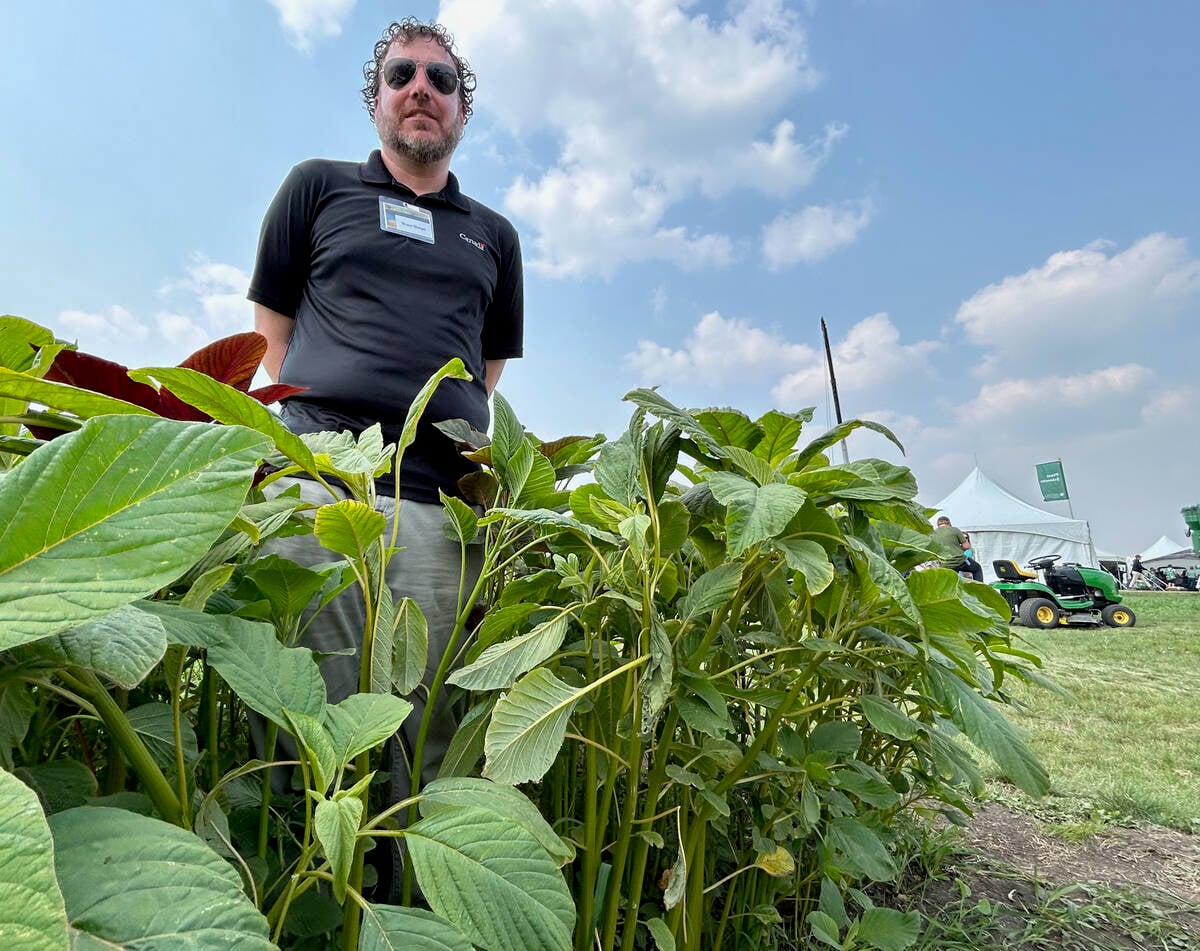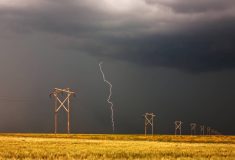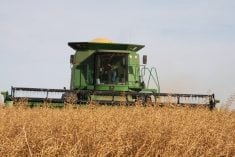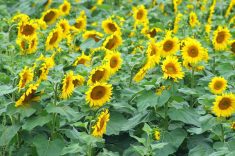With the start of the growing season just weeks away, a lot of producers are wondering how moisture conditions will shape up by then on the Prairies.
That question was top of mind for farmers to whom Grainews spoke at the CropConnect 2025 conference in mid-February in Winnipeg.
Their concerns revolved around a considerable snowpack in many places and whether that might lead to saturated fields or a late start to planting, if the snowmelt comes too late or too quickly.
Read Also

Glufosinate-resistant waterhemp appears in U.S. Midwest
News of glufosinate-resistant kochia in the U.S. is concerning as farmers are losing options to control waterhemp, also of the pigweed family.
“I’m from western Manitoba and we got a lot of snow, so I imagine it’s going to be a wet spring,” says Neil Galbraith, who farms near Basswood. “There’s a lot of snow to melt, and we just have to hope it goes in April and isn’t still around in May.”
Scott Mowbray, who farms near Cartwright in southwestern Manitoba, is somewhat apprehensive as well.
“All the snow that’s fallen in the last two months, it’s still there. None of it has melted, so it be a might be a slow, slow start,” he says.
“The wind has definitely pushed snow around a lot, too, so some of the low spots and tree rows and things like that are just filled right up. Some of that takes a lot longer to melt than when it’s just a nice even foot of snow across everything.”

Of course, the best-case scenario is a slow and steady snowmelt that enables fields to dry out in good time and reduces the risk of spring floods.
Jeff Wiebe is a producer at Starbuck, just west of Winnipeg. At this time of year, he says, the possibility of some spring flooding is aways on his mind, as it is for most everyone else who farms in Manitoba’s expansive Red River Valley.
So just how concerned should farmers be? We checked in with Trevor Hadwen, an agroclimate specialist with Agriculture and Agri-Food Canada in Regina, to see if he could provide some answers.
La Niña delivers cold, wet winter
In an interview with Grainews, Hadwen said precipitation over the winter has led to a “really good snowpack” in most areas of Manitoba and across the Prairies as well. There are a few exceptions — notably the foothills of southwestern Alberta and some smaller areas in eastern Manitoba.

“It’s been a cold, wet winter period for much of the Prairie region,” Hadwen says, “and that can be attributed to some of the La Niña that we are dealing with, which traditionally delivers colder and wetter winter periods for the Prairie region.”
Hadwen, interviewed in late February, said it was too early to make predictions about the snowpack’s potential impact. It depends on how the snowmelt goes.
“We really hope for that early warmup and the reduction in the snowpack earlier in the spring rather than later. If we get a nice, slow snowmelt with warm days and cool nights, this moisture will get into that soil and really replenish the soil moisture loss that we’ve seen over the last number of years. So that’s a huge factor as we go forward,” he says.
“If we get a cold spring and the snow melts very rapidly in late spring with a quick warm-up, a lot of that moisture is going to get into the reservoirs and streams and not get into the soil.”

A really poor spring in Manitoba could possibly mean “some fairly significant flooding, either localized through just the snowmelt or through overland flooding from rivers as well,” he adds.
“Manitoba, in particular, is a region of the Prairies that does deal with spring flooding quite a bit. That’s always a concern when we have large amounts of snow, especially when you’re downriver of some of the large amounts of snow. Again, it really depends on how that snow melts this spring.
“At this point we’re not seeing any real risk of significant flooding. That will be determined probably within the next month or so, when we start to see some larger indications on whether we’re going to see some of those problems arise.”
He notes some hopeful, albeit very early, signs.
“There’s some good melting in some regions (and) we’re getting some water reduction. That’s exactly what we need to limit the flooding, improve the moisture retention in the soil and move towards a really good summer.”
Positive moisture outlook
Overall, Hadwen notes, the moisture outlook heading into spring planting was generally encouraging for agricultural land in the Prairies. Part of that is due to all the precipitation delivered by La Niña that should help recharge soil moisture supplies.
“We’re looking at a fairly positive situation across the majority of the region,” he says.
“For the most part, we had fairly good soil moisture going into the winter season (and) we’re not seeing a whole lot of soil moisture loss once the soil froze this winter.”
The result is “we do have some good soil moisture reserves right now and it’s looking like they’ll improve this spring with the snowpack that we have.”
He notes “there are some pockets in Manitoba and that area along the eastern slopes of the Rockies and the foothills that are very dry still, with low snowpack there, so that might affect water supplies later in the year.”
Hadwen says “a couple of early springtime showers” would likely alleviate concerns in Manitoba where there are lower soil moisture levels.
While reservoirs were generally below normal in the driest parts of Alberta, he adds, “we do have time yet (and) we do tend to get a lot of moisture in that region in the early spring there.”
In contrast with that, Hadwen points out a large swath of Alberta received “tremendously good moisture” over the fall and winter.
“That whole central portion of Alberta had probably close to twice as much precipitation as they would normally receive,” he says. “If you look at it in a statistical sense, we’ve got areas in there that would only receive this much moisture once every 50 years.”
Hadwen acknowledges the early moisture outlook for 2025 is quite a reversal from the drought conditions that plagued much of the Prairies in recent years.
As an example of that, he cites the situation in southern Alberta in early 2024, when the province and the federal government started investigating how to deal with low moisture and what was looking like could be a record dry summer.
Thankfully for farmers, timely and substantial June rains meant that didn’t happen.
“That changed the way we were looking at things completely,” Hadwen says.
















